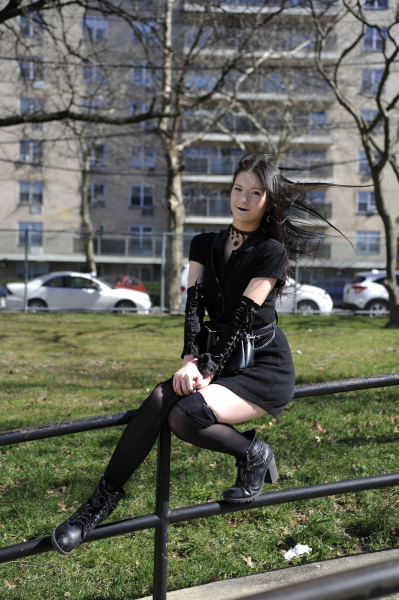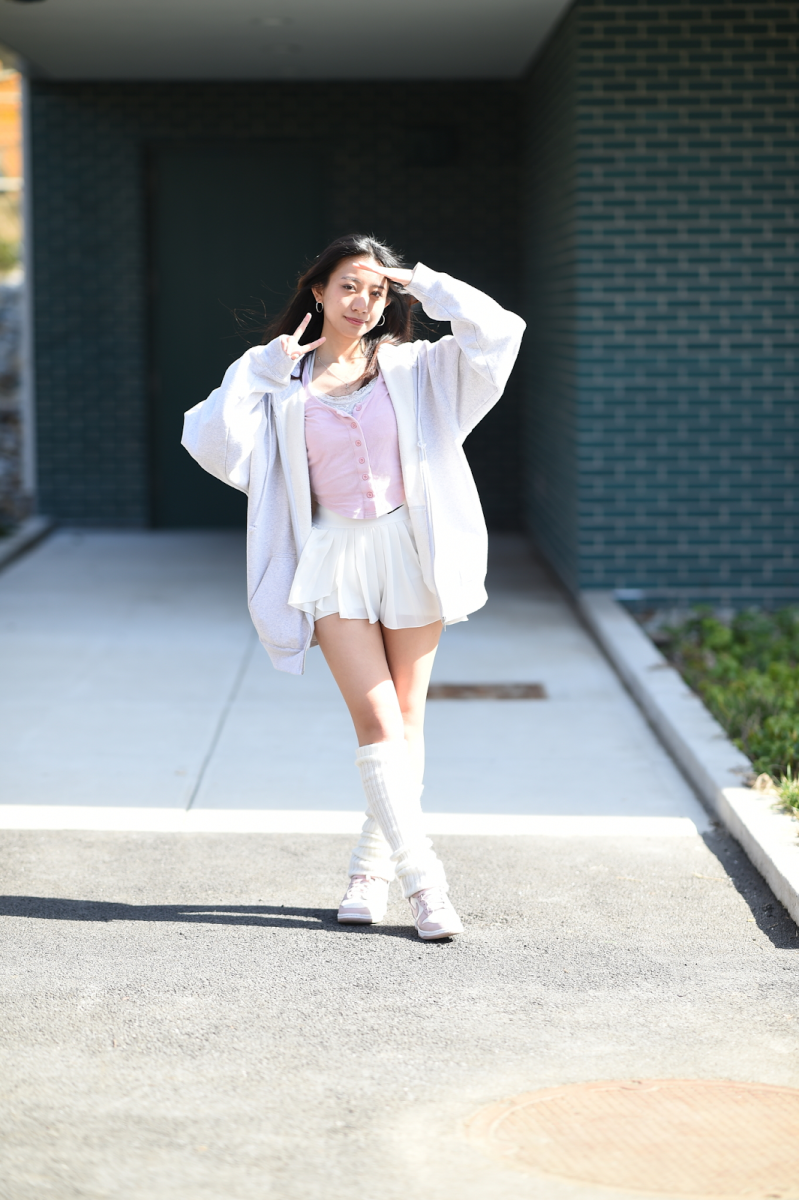With the weather warming up and the dwindling need for hoodies for comfort, Bronx Science students dress to impress with newly adapted styles.
At Bronx Science, walking through a single hallway introduces you to an abundance of people and a drastic range of styles. From cutecore, originating from an online aesthetic including image edits that combine typical kawaii imagery with slight traces of gore, to preppy, (originating in the early 1990s) inspired by leisure activities commonly enjoyed by the upper classes, the fashion trends at Bronx Science exhibit a wide range.
Why the different styles?
Over the span of a few decades, fashion trends have quickly risen, and just as quickly fallen. For instance, take the constant shifts in jean styles, oscillating between baggy and skinny, and everything in between. Prior to the 2000s, baggy jeans were a staple, first becoming mainstream in 1990, and popularized by American Rapper MC Hammer. During his hit release, “Can’t Touch This,” he introduced the media to the infamous “Hammer Pants” or what are known today as “Baggy Jeans.”
Baggy jeans allowed for something skinny jeans did not – free movement. During this period, breakdancing and skateboarding were seen as trendy, and these baggy jeans allowed for dancers and skateboarders alike to easily do what they love while simultaneously being fashionable.
Subsequently, the trend of baggy jeans quickly skyrocketed, dominating the fashion industry for years, up until the mid-2000s, which brought about the rise of the skinny jeans. At first, they were mostly worn by rock stars and other celebrities, but eventually, they became increasingly mainstream. Skinny jeans were the polar opposite of baggy jeans, with the denim fitting and hugging every crevice of one’s legs and hips. Simply put, it was more flattering for one’s body.
Skinny jeans dominated the market for a decade and a half, but then quickly died off, instead, being, once again, replaced with baggy jeans. This endless cycle of trends, perpetually going back and forth, can be explained by one common denominator: influence.
People tend to try to find ways to fit in and flow with what’s currently trending. With the rise of social media, people are more easily influenced by everyone and everything, from athletes, to movie stars, to royalty, and even to books.
How would you describe your personal style?
Here at Bronx Science, with almost 3,000 students, students often describe their style not by a one word description but more as a broad range.
Eva Wang ’24 is a prime example. In an interview, she describes her style as ranging from “Adam Sandler to SoHo fashion,” depending on the occasion. “When I do want to look presentable ,however, I like to wear form-fitting flattering items that include things like Henley tops and flared jeans,” said Wang.
For others, it’s simply the pieces they find pleasing. Mia Young ’24 explains, “I have many styles, things that I find beautiful that I wish to wear. However, the extent of my style lately has been mostly goth,” Young said. Another key concern for students who have not fully developed their style is money. Without a stable income, many students find it hard to fully express themselves, given the costs of clothing. Young wants to continue exploring her style but explains that she needs “more time and funding for these [outfits].”

Other students prefer to dress for comfort rather than style. “I would describe my style as comfortable, maybe. I don’t really put much thought into anything I wear, as long as it’s passable and I’m comfortable wearing it. Although in the past year or so, I’ve been making a more conscious effort to try to wear clothes that are a bit baggier to fit my frame better,” says Trevor Badri ’24.
What was your inspiration for the way you dress?
With the spike in social media usage, online advertisements, and online stores, inspiration comes with a swipe of a finger.
For students like Wang, social media is a lifesaver when it comes to style. She says she takes most of her inspiration from “ Tiktok influencers and Pinterest boards.”
Following social media, friend groups, neighborhoods, and family also play a fundamental role. Badri said, “My inspiration is really just who I’m around and social media. I wouldn’t say that I think at all outside of the box in the way that I dress, and I wear items that have mainly been first tested by my friends, because I know they are reliable. I have tried to start changing this trend, and I think it’s been working. Now, I shop for things on my own without having any other voices giving me their opinions.”
Whereas for others, inspiration comes from within. For example, Young claims that she has “no inspiration. Instead, I buy things that I find pretty or fun.”
What is your absolute favorite piece of clothing/accessory that you wear?
Staple accessories are key to every outfit. Everyone has them, whether it’s the necklace that you leave on, or something you wear every blue moon.
For Wang, it’s zip-up hoodies and silver hoops. “They’re such crucial staples and help so much with staying warm and looking less basic,” said Wang. Similarly, Badri says his favorite accessory is his silver necklace. “I think not only does it look good on me as I’ve tried wearing gold before, and it hasn’t been the best on me, but it also means a lot to me. This is a combination that’s hard to come by, as the piece has to be both timeless and significant,” said Badri.
For others, it may be something out of the ordinary and impractical. Young said, “My favorite piece would have to be my pink lolita gown that I covered in synthetic candies! I don’t wear it much since it takes a long time to set up and put on, but I adore it.”
What is your favorite fashion trend? Why?
“I love that low-waisted jeans are coming back! Every body type looks great in them and I love it when people show off cute belly piercings,” Wang said.
“My favorite fashion trend is probably during every summer when everyone starts to pull out Hawaiian dress shirts. I just find them really funny and they always make me smile. It brings a bit of a tropicality to the sometimes industrial feeling city during the summer,” Badri said.
What is your least favorite fashion trend? Why?
Fashion trends are solely subjective. Many people scurry to fit into a specific trend, but the second that this trend dies down, they rush to criticize it.
For this reason, Young dislikes the idea of fashion trends as a whole, as pretty style choices are timeless. “Letting the popular opinion dictate what fashion is or is no longer ‘in’ never fails to give me a laugh,” Young said. However, if she had to pick one trend, “it would probably have to be having only the front strands of hair dyed.” She is referring to the “money piece” trend, which blew up over quarantine, due to celebrities like Beyoncé, and notably, Jennie Kim, embracing it.
While “money pieces” have died down from their initial peak, other hated trends have not. Classics, like essential brand hoodies, will persist for many years. Badri, however, is not a fan. He expressed his dislike for “these spyder hoodies and even essentials.” “The actual hoodies themselves are fine, but they are just everywhere, and I hate to see such an ugly item so often. Even seeing supreme still bothers me, as it’s just been so overdone over the past ten years,” Badri said.
At Bronx Science, walking through a single hallway introduces you to an abundance of people and a drastic range of styles. From cutecore, originating from an online aesthetic including image edits that combine typical kawaii imagery with slight traces of gore, to preppy, (originating in the early 1990s) inspired by leisure activities commonly enjoyed by the upper classes, the fashion trends at Bronx Science exhibit a wide range.

